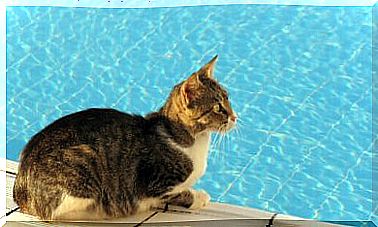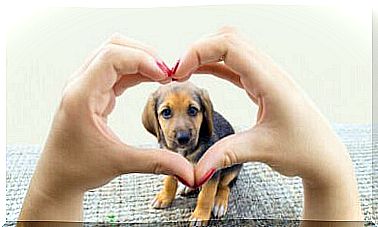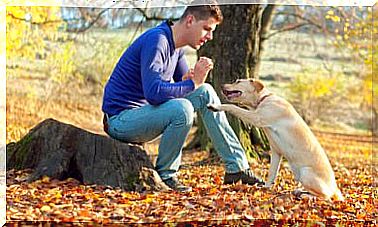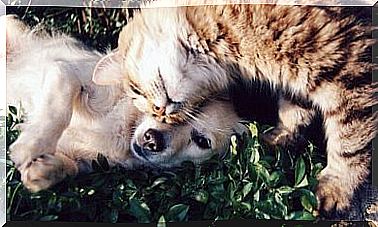What To Do If Your Dog Eats Too Fast
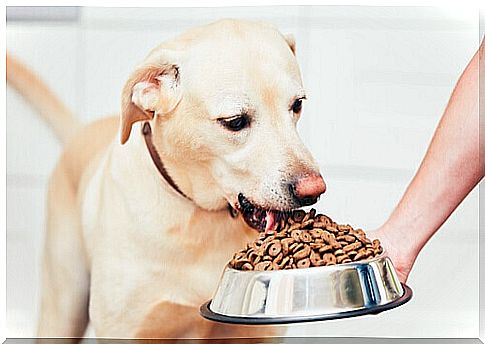
Surely, more than once, you have noticed that some dogs eat very quickly. Almost swallowing food, with voracity and anxiety. Behavior that can be harmful to their health. Both for disorders related to poor digestion and for the ingestion of too large parts that could cause the animal to suffocate.
It is impressive to see your four-legged friend rush towards the bowl and start eating in an anguished and aggressive way. A danger to his well-being that hides a series of problems on which it is worth intervening, in order to avoid worse problems.
If your dog eats too fast, here’s a handy guide on how to avoid and correct this bad habit.
Does the dog eat too fast? How to prevent it?
Eating time can get really hectic.
Most dogs that eat fast do so almost without chewing. This is a classic habit linked to the survival instinct. In the primitive pack, everything had to be swallowed at great speed, to prevent other members from taking advantage of the succulent feast.
By eating quickly, animals make sure they have priority over others and ensure their survival by being able to finish the meal completely on their own.
Despite the passing of the centuries, this practice continues to be predominant in many examples. It matters little that owners constantly provide food to their pet. L ‘ instinct always prevails, but action is needed to protect the health and well-being of your dogs.
A danger to the health of the dog
It is essential to prevent your dog from eating fast. A too rapid swallowing can cause many problems to your body. Some specimens are known to die of suffocation during the meal.
An animal that swallows everything voraciously, chewing little and badly, pushes a large amount of air into the stomach. This will lead to serious gastric problems and poor digestion, with constant presence of belching and flatulence.
Eating fast is a serious danger especially if human food is provided to the dog. For example, a bone that, if swallowed, can perforate the esophagus or other organs, increasing the risk of suffocation. Another example comes from broths or moist foods that, if too hot, could cause burns in the oral area of the animal, unable to control its frenetic pace.
But the most serious danger is stomach torsion. If not treated in time, it can even cause the animal to die. It happens when, due to weight, the stomach detaches from the muscles and tendons that support it, separating from the intestine.
Symptoms of gastric torsion in a dog are as follows:
- Swelling of the belly
- Weakness
- Apathy
- Inclined posture
- Gagging
- Ache
In the event that your dog exhibits one or more of these symptoms, you will need to go to the vet urgently. Taking immediate action will allow your four-legged friend to receive adequate care and to recover before his general situation is irreparably compromised.
What to do if a dog eats too quickly?
After talking about the health problems and the consequences for dogs that eat too fast, here are 3 useful tips to adopt with your four-legged friend:
- Put the bowl upside down . Turning the saucer your dog eats can have benefits on your pet’s swallowing time. Since the space is smaller, the dog will find a smaller amount of food and will have to work a little harder to finish the course, as the form has cracks that are difficult to access. There are also bowls with different and special shapes, precisely to make the meal phase more complicated and slow.
- Toys with food. There are special games in pet shops that allow you to put food inside them. As the dog bites the object, the gruel comes out in limited portions. It is also ideal for entertaining the animal and allowing it to unleash its hunting instincts.
- Reduce quantities. While limiting the portions cannot reduce the speed, at the very least your dog will be safe from problems such as stomach twisting. The least amount of food ingested will be digested in a less suffocating way and, if you have an overweight dog, distributing the food over two or three moments a day is certainly a advisable choice.
Other useful tips
- Splitting meals. Divide the baby food into two or three portions and feed them in rotation as the dog finishes them. You can spend minutes between courses, reducing portions and avoiding possible suffocation.
- Hold the plate up. A good technique for making your friend eat more slowly is to place the bowl on a bench, chair, or table. This will keep your head higher, allowing you to expel air more easily.
- Hide the baby food. In addition to making him play, this will prevent your dog from eating like a raging wolf. Place three plates in different areas of the house so that the animal has to search for food. In between dishes, some time will pass, reducing his digestive stress.


